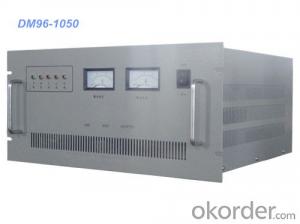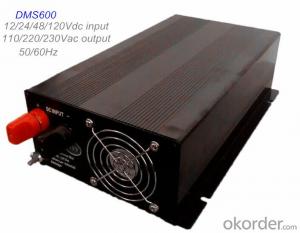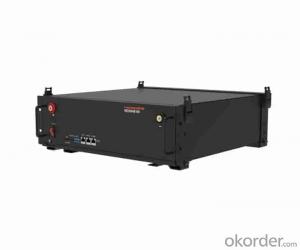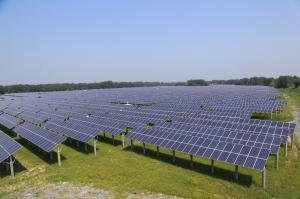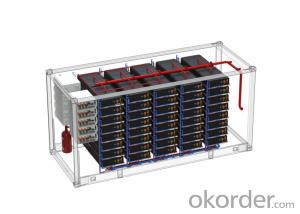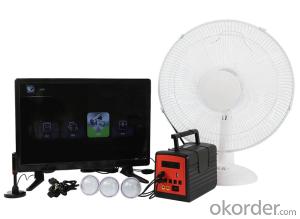Solar 120v Inverter
Solar 120v Inverter Related Searches
Home Power Inverter For Solar Solar Power Inverter For House Solar Power Inverter For Rv Solar Panel With Ac Inverter Solar Panel Kit With Inverter Rv Solar System With Inverter Solar Panel With Inverter Solar With Electric Inverter Inverter With Battery Solar Inverter With Solar PanelsHot Searches
Type Of Inverter For Solar Types Of Inverter For Solar Used Solar Inverter For Sale Inverter Size For Solar System Solar Edge Inverter For Sale 5kw Solar Inverter For Sale Solar Inverter For Sale Solar Inverter For Battery Solar Inverter For Split Ac Solar Inverter For Laptop Solar Inverter For Fridge Solar With Inverter Price Solar Inverter With 2 Battery Solar Inverter Price In China Best Solar Inverter In China Solar Inverter Price In Dubai Solar Inverter Price In Uae Solar Inverter Price In Kenya Solar Inverter Price In Kerala Solar Hot Water Collectors For SaleSolar 120v Inverter Supplier & Manufacturer from China
Okorder.com is a professional Solar 120v Inverter supplier & manufacturer, offers integrated one-stop services including real-time quoting and online cargo tracking. We are funded by CNBM Group, a Fortune 500 enterprise and the largest Solar 120v Inverter firm in China.Hot Products
FAQ
- Yes, there are limitations to the amount of electricity a solar energy system can generate. These limitations include factors such as the size and efficiency of the system, the amount of sunlight available, and the geographical location of the system. Additionally, external factors like weather conditions and shading can affect the system's performance and limit its electricity generation.
- Yes, solar energy can still be used in cloudy climates, although the efficiency may be reduced. Solar panels can still generate electricity even with limited sunlight, although the output will be lower compared to sunny conditions. Additionally, advancements in solar technology and the use of tracking systems can help optimize energy production in cloudy environments.
- A solar energy system typically requires minimal maintenance. Routine maintenance involves cleaning the solar panels to remove any dust or debris and ensuring that the system is functioning optimally. Additionally, occasional inspections may be required to check for any potential issues or malfunctions. Overall, the maintenance requirements are relatively low, making solar energy systems a cost-effective and hassle-free choice for renewable energy.
- The efficiency of a solar energy system is significantly impacted by temperature. As the temperature increases, the efficiency of solar panels decreases. This is due to the behavior of the semiconductor materials used in solar cells. When solar panels are exposed to sunlight, they absorb photons and convert them into electricity. However, as the temperature rises, the resistance of the semiconductor material increases, leading to a decrease in the flow of current. This phenomenon is known as the temperature coefficient of power. The temperature coefficient of power is usually expressed as a percentage per degree Celsius and varies depending on the type of solar panel technology. Most solar panels have a negative temperature coefficient, meaning their efficiency decreases as the temperature rises. On average, the efficiency of solar panels can decrease by around 0.5% to 0.8% per degree Celsius increase in temperature. Additionally, increased temperatures can also cause thermal losses within the system. Heat can build up within the solar panels, reducing their efficiency further. This is especially true in hot climates or during periods of high solar irradiance. To mitigate the impact of temperature on solar energy system efficiency, various strategies can be employed. One common method is to incorporate cooling mechanisms, such as ventilation or water circulation, to dissipate the excess heat generated by the solar panels. This helps maintain lower operating temperatures and consequently improves the overall efficiency. Furthermore, proper system design and installation techniques can also help minimize temperature-related losses. For example, mounting solar panels with sufficient spacing to allow for air circulation can prevent overheating. Additionally, selecting solar panels with lower temperature coefficients can help mitigate efficiency losses in high-temperature environments. In conclusion, temperature has a significant impact on the efficiency of a solar energy system. Higher temperatures can cause a decrease in the efficiency of solar panels, primarily due to increased resistance in the semiconductor materials. To optimize the performance of solar energy systems, strategies such as cooling mechanisms and proper system design should be implemented.
- Yes, solar energy systems can be used for powering electric vehicle testing tracks. Solar panels capture sunlight and convert it into electricity, which can be used to power various electric devices, including electric vehicle charging stations and infrastructure on testing tracks. By installing solar panels near or on the testing tracks, electric vehicles can be charged directly from the renewable energy generated on-site, reducing dependence on fossil fuels and minimizing greenhouse gas emissions. Additionally, solar energy systems can provide a reliable and sustainable source of power for electric vehicle testing tracks, allowing for continuous testing and reducing operating costs. Overall, utilizing solar energy systems for powering electric vehicle testing tracks is a viable and environmentally friendly solution.
- The impact of snow cover on the performance of solar panels can vary depending on the severity and duration of the snowfall, as well as the design and tilt angle of the panels. When solar panels are covered in snow, they are unable to generate electricity as effectively. The snow blocks the sunlight from reaching the panel's surface, reducing the amount of energy that can be converted. This can lead to a decrease in the overall power output of the solar system during the snowy period. However, it is important to note that most solar panels are designed to have a tilt angle that allows for natural snow shedding. When the panels are installed at an angle, the snow can slide off more easily, exposing the surface and allowing sunlight to once again reach the photovoltaic cells. In regions with regular snowfall, it is common for solar panel installations to have a steeper tilt angle to facilitate snow removal. Additionally, some solar panels are equipped with anti-reflective coatings or self-cleaning features that can help reduce the impact of snow cover. These coatings or features can prevent snow from sticking to the surface, allowing for faster snow removal and improved performance. It is worth mentioning that snow cover can also have a positive impact on solar panels in certain cases. A thin layer of snow can act as an insulating layer, helping to retain heat and potentially increase the efficiency of the panels. However, this effect is generally minimal and limited to specific conditions. Overall, while snow cover can temporarily reduce the performance of solar panels, the impact can be mitigated through proper installation techniques and design considerations. In areas with regular snowfall, it is important to consider the tilt angle, anti-reflective coatings, and self-cleaning features to ensure optimal performance throughout the year.
- Yes, solar energy systems can be used for heating and cooling homes. Solar energy can be harnessed through the use of solar panels or solar water heaters to generate electricity or heat. This energy can then be used to power heating and cooling systems in homes. For heating, solar energy can be used in various ways. Solar thermal systems can be installed to heat water for radiant floor heating or to generate steam for heating. Solar air heating systems can also be used to heat air, which can then be distributed throughout the home using ductwork and fans. Additionally, solar heat pumps can be utilized to transfer heat from the sun into the home. Similarly, solar energy can be utilized for cooling homes. Solar-powered air conditioning systems can be employed, which use solar energy to drive the compressors and fans needed for cooling. These systems can be especially effective in hot climates where the availability of sunlight aligns with the need for cooling. In both heating and cooling applications, the use of solar energy systems offers several advantages. It is a clean, renewable source of energy, reducing the reliance on fossil fuels and minimizing carbon emissions. Solar energy systems also provide long-term cost savings, as they reduce or eliminate the need for traditional heating and cooling methods that rely on grid electricity or fossil fuels. Additionally, solar energy systems can be integrated into existing homes or incorporated into new construction, making them a versatile and sustainable option for heating and cooling homes.
- Yes, solar energy systems can certainly be used in remote areas without access to the power grid. In fact, solar power is often the ideal solution for such locations. Solar energy systems consist of solar panels that convert sunlight into electricity, and this electricity can be used to power various appliances and devices. Remote areas that are off-grid typically lack access to traditional sources of electricity, such as power lines. However, solar energy systems provide an independent and sustainable source of power. By harnessing the abundant sunlight available in these areas, solar panels can generate electricity even in the absence of a power grid. Solar energy systems in remote areas can be designed to store excess energy in batteries, ensuring a continuous power supply even during cloudy days or at night. These battery systems allow for the storage of solar-generated electricity, providing a reliable source of power for various needs, such as lighting, communication devices, water pumps, refrigeration, and even powering small businesses. Furthermore, the installation and maintenance of solar energy systems in remote areas are often more cost-effective compared to extending power lines from the grid. Solar panels have become more affordable in recent years, and advancements in technology have increased their efficiency and durability. Additionally, the absence of fuel costs and the minimal need for ongoing maintenance make solar energy systems a sustainable and cost-efficient solution for remote areas. Overall, solar energy systems are an excellent option for powering remote areas without access to the power grid. They provide a sustainable, reliable, and cost-effective source of electricity, enabling the development and improvement of communities in these remote locations.


